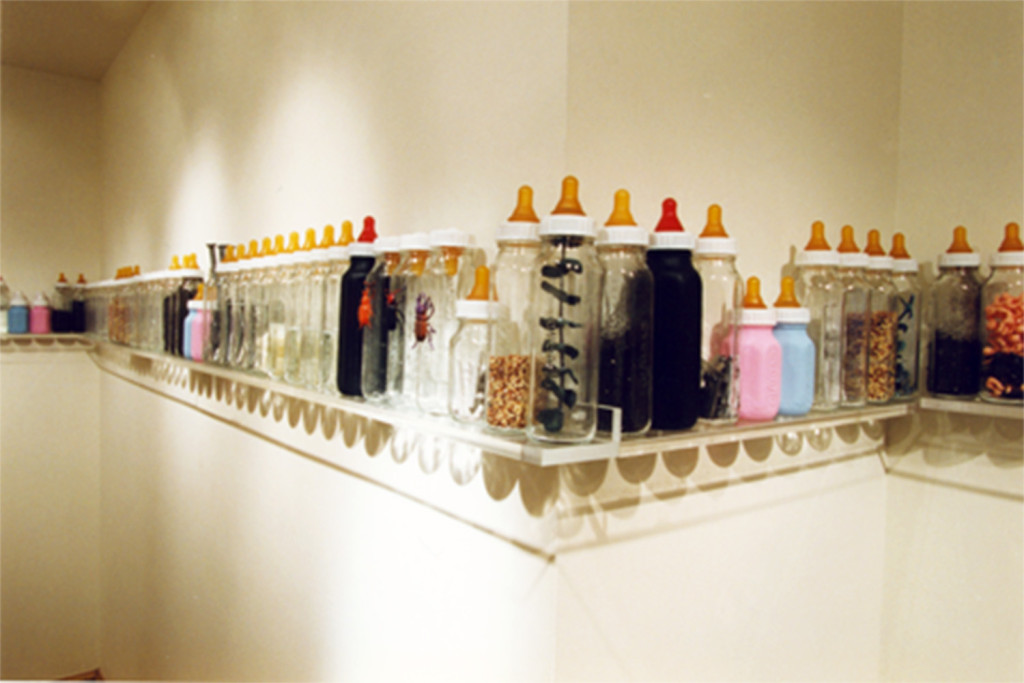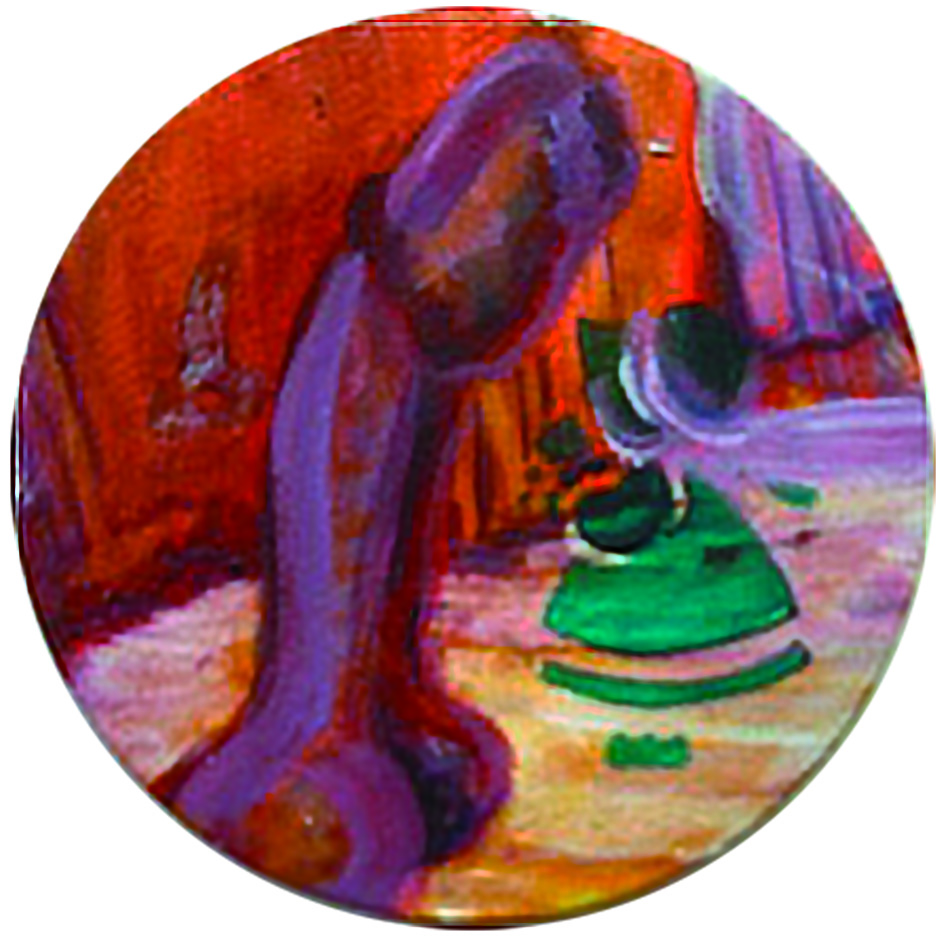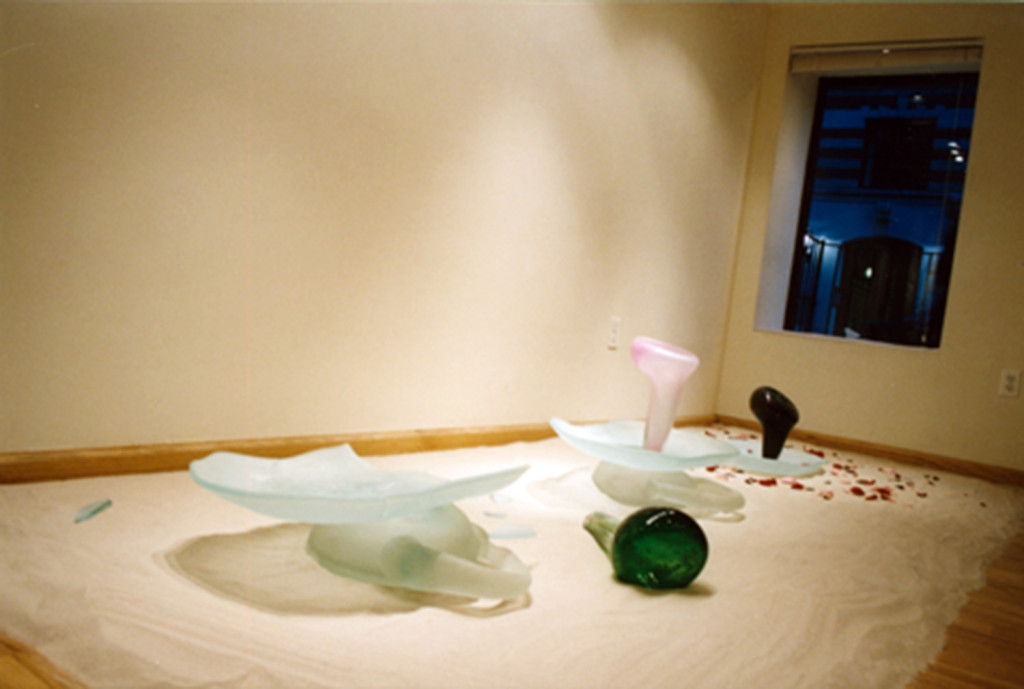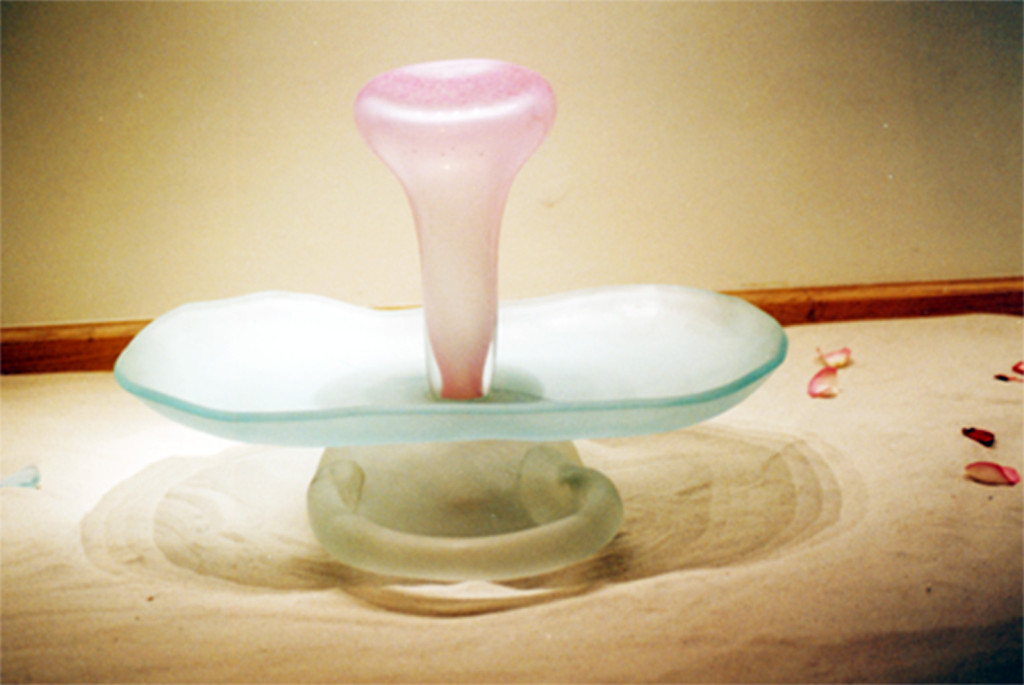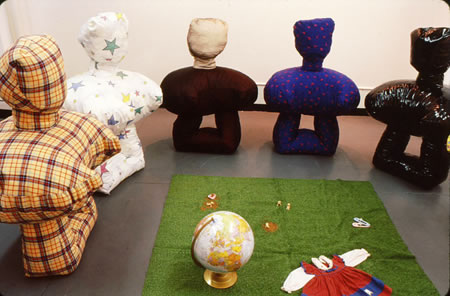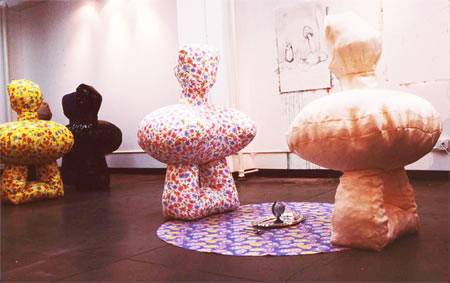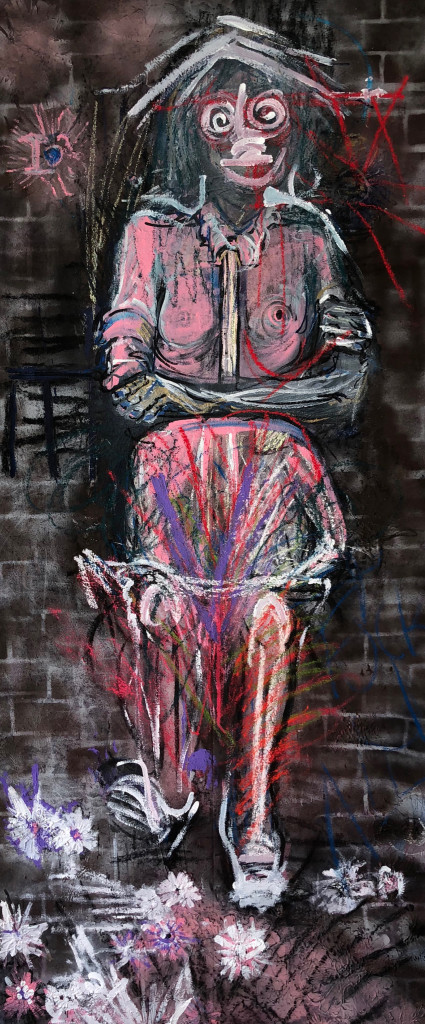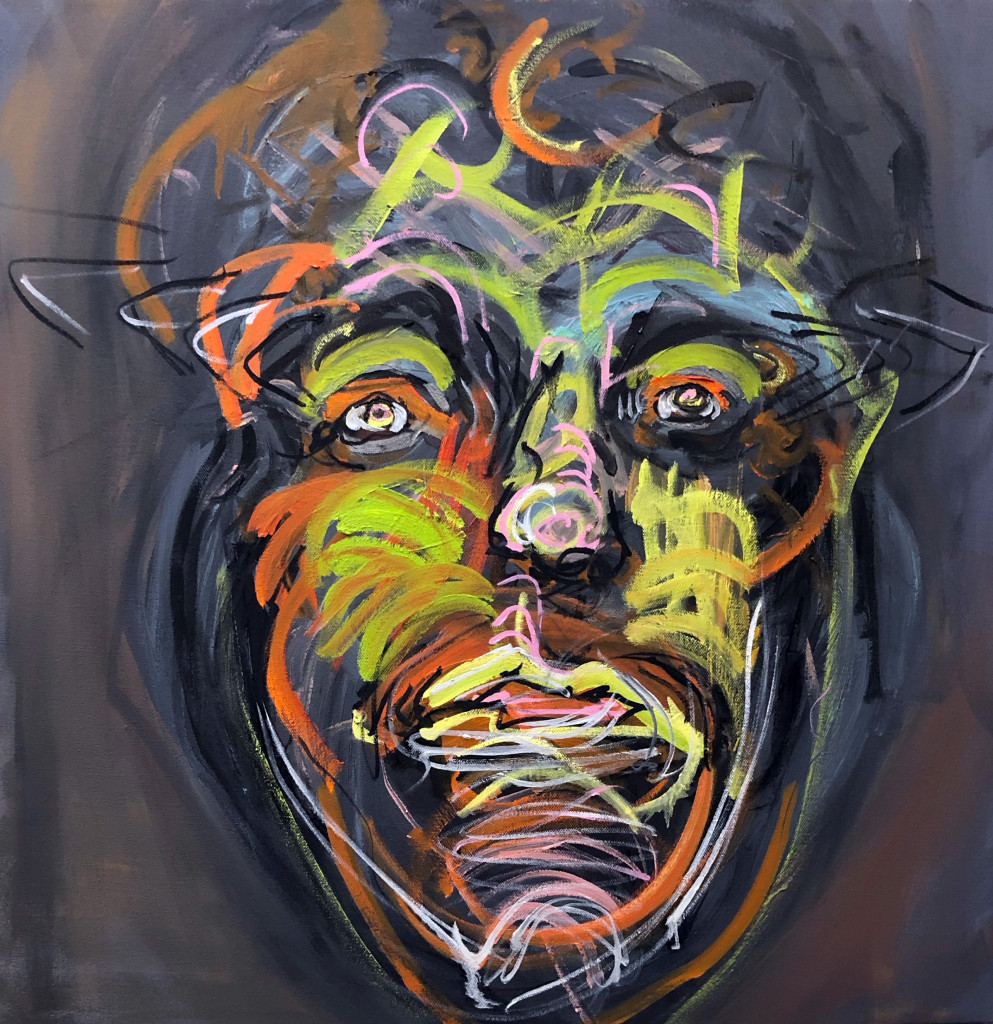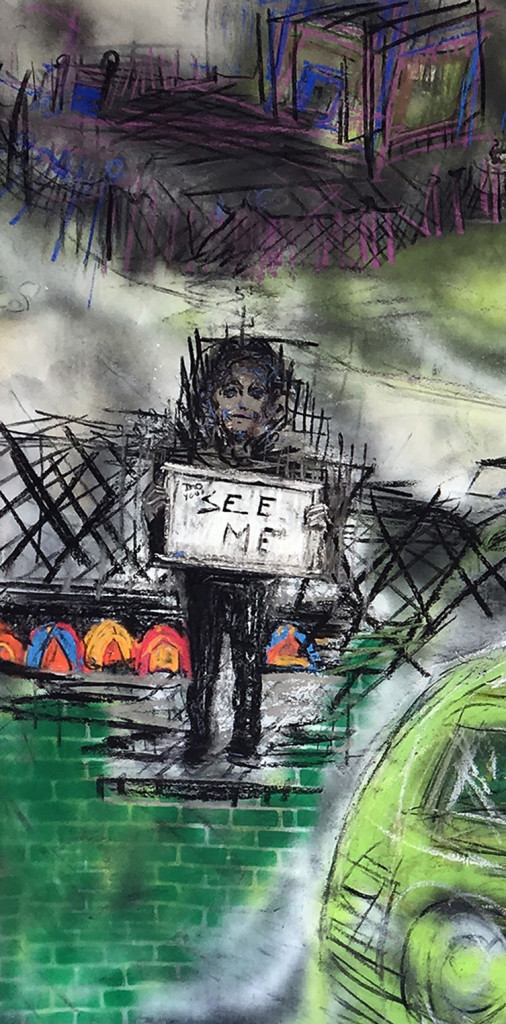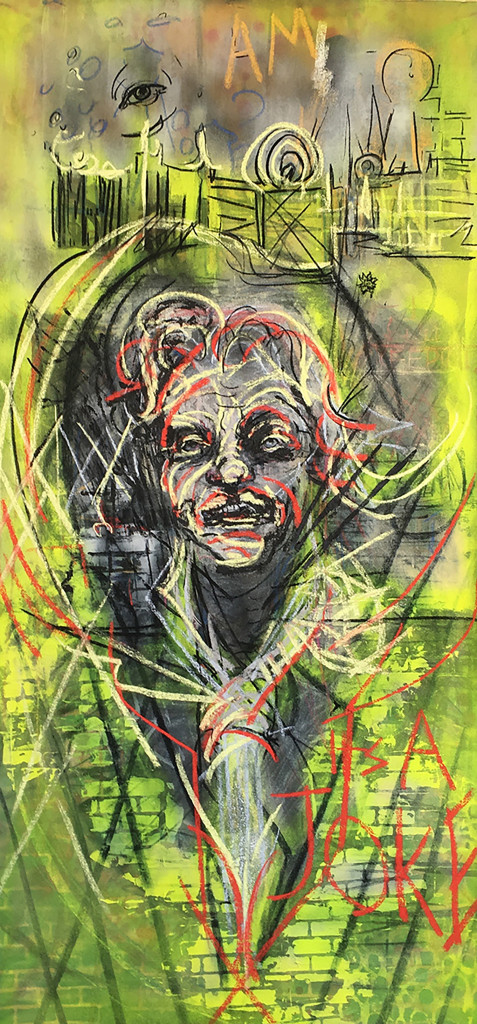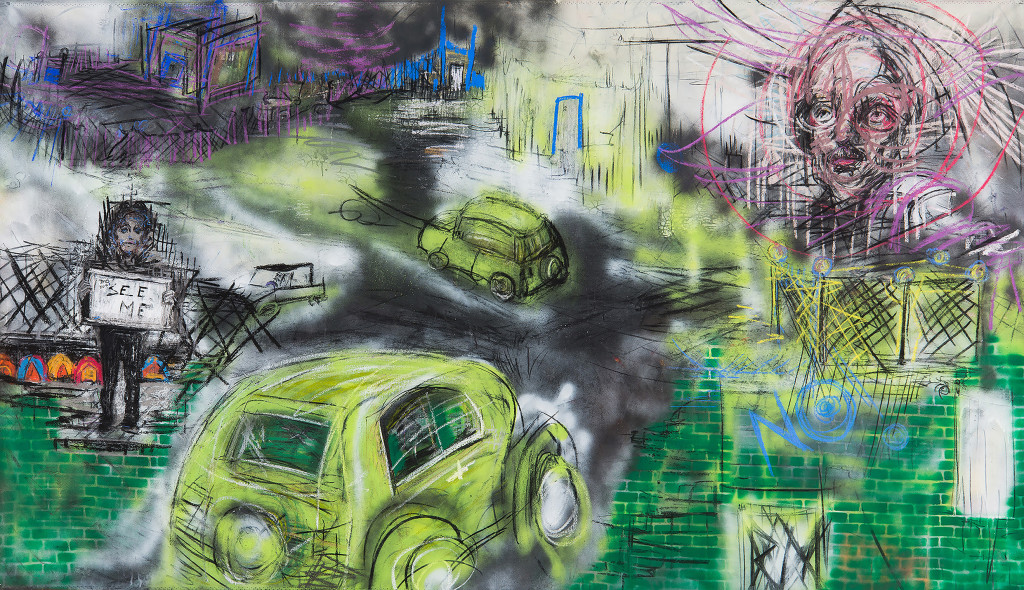 Artist Randi Matushevitz is something of a chameleon, always driven by an exploration of the human spirit and the desire to evoke and reflect the reality of existence: both her own, and that of others. Prolific and profound, her work has shifted and changed over time, moving from pastels and bright colors to darker and edgier territory in terms of both palette and subject. As layered and nuanced as her art itself is the meaningful thematic nature of her work: regardless of style, a deep sense of kindness and hope can be extruded from even the darkest piece.
Artist Randi Matushevitz is something of a chameleon, always driven by an exploration of the human spirit and the desire to evoke and reflect the reality of existence: both her own, and that of others. Prolific and profound, her work has shifted and changed over time, moving from pastels and bright colors to darker and edgier territory in terms of both palette and subject. As layered and nuanced as her art itself is the meaningful thematic nature of her work: regardless of style, a deep sense of kindness and hope can be extruded from even the darkest piece.
She describes her earliest works as “‘an exploration in making special,’ a phrase coined by social anthropologist Ellen Dissanyake. Dissanyake’s book proposed that making special is a social biological need necessary for good health. Her emphasis was on the need to partake in the creative act as nurturing and necessary.” The book offered examples ranging from tribal culture to today’s city dwellers, touching on creative work from body marking to designing clothing. Matushevitz says “The idea of nurturing through artwork was interesting to me, as a woman who did not follow the traditional role model for marriage and children that was the standard.”
She created three installation works between 1998 and 2000 that explored female identity at the beginning of her career.
The first, Milk to Meat exhibited at Leonora Vega Gallery in New York City. It was an installation of 1500, Even-flo glass baby bottles with the company name embossed, wooden tables, and personal ephemera. “The quip, ‘you are what you eat,’ led me to think about how we feed our young and the priorities of adulthood,” Matushevitz says.
The bottles were filled with everything from birdseed to battery-operated lights, insects, and plastic multi-racial babies. “The idea is connecting the baby bottle and the water bottle, that we are still suckling, that the bottles were symbolic of nurturing.”
Her subsequent installation, The Feminine Side of Life, offered a series of miniature 6” round acrylic and collage paintings. “The bodiless dress is the protagonist in a body of work that compares and contrasts traditional expectations of women with the contemporary life style of contemporary women.”
Matushevitz’ Rose de Amor explored life cycle of romantic relationships considering pacification. To create the exhibition which dealt with the how and why in which people pacify themselves, by collaborating with a professional glass blower in Miami, to design and create three 40-inch tall by 25- inch wide glass pacifiers.” The three, frosted glass, purple, rose, and green hand-blown nipple shapes were presented on a vertical bed of sand; the first had lost its nipple, the second was whole, and the third was in pieces.
Matushevitz continued exploring art as a nurturing medium with Salt of the Earth, in which she noted both positive and negative options for self-soothing with an installation of nine over-sized soft sculptures set on astro-turf, vinyl tablecloths, and surrounded by ephemera and site-specific wall drawings connecting “the feminine side of life with ideas of pacification and sex.”
Overtime, her work changed and evolved. While some series were whimsical, even light-hearted, others went deeper.
With her work in the 2014-2016 series Mysterious, there arose a stream of consciousness practice in mixed media drawing that involved charcoal, pastel, spray paint and acrylic. “A friend had given me a ream of large print paper, 42 inches by 27 inches, as a moving present. That is how the practice began.” Creating big works led to big ideas. “These open-ended narrative drawings became a metaphysical, spiritual and psychological study in my relationship to myself, to the tough and the joyful experiences that challenge fortitude for survival or madness. I began to see the wear and tear of daily life, aging, love and loss on others,” she relates.
With her series Conundrum, Matushevitz moved into darker territory, with immersive and emotional images that can best be described as dark and intense. The work used multiple layers of charcoal, pastel, spray paint, and acrylic, and involved symbols, stencils, and a deep look at the emotion of human culture and society, bursting with the hope and fear of our current socio-political times.
Currently, Matushevitz is at work on a richly diverse series titled Ugly Portraits, which she recently exhibited at Coagula Gallery in downtown Los Angeles. The series grew out of a desire to paint with oil, she explains, as well as an interest in “finding alternative ways to see each other.” She adds that “The recognizable power of a facial expression transmits inaudible information that engages the viewer in a conversation that is simultaneously anonymous and identifiable. Growing up in Las Vegas provided the perfect backdrop to observe us, humankind. These portraits meet the viewer on their own terms with a silent gesture in an inaudible moment.”
She describes the work aptly as being both sublime and grotesque, “colorful and textured, these synthesized expressions of strangers, family and friends serve as a tactile and psychological expression of humankind absent of culture or language.” The faces are not just of everyone, they are with the “every” that we each carry inside us.
Matushevitz says that what draws her into darker places is the through-line of each series she creates, an exploration of the human condition and spirit.
With Mysterious, she began to release the darkness from inside out, making a decision to work in a stream of consciousness. “I needed to release…the dark, dystopian, and anxious came out, of me, or rather through me, and so did the light, the uplifting and the joyful.” She asserts that “The spirit of my work is reflective of my existence. As I grow and evolve into a more complete human, I see my work as connected to the larger energy of the whole. Communicating, affecting the world to be a connected place, where humans consider all life, culture and language as special. It is what drives me. I am the vehicle.”
The artist terms her work both existential and figurative. It is intuitive and formal both, and it would be remiss not to note that it is also infused with elements of magic, and the power of “our ability to affect the world for positive or negative outcomes.”
Her art often has the quality of a fairy or folktale; a narrative that’s brave, loving, and a little bit spooky. There are symbols and signs, figures and landscapes – the impact of viewing her work is immersive and emotional. Enter the world of Matushevitz and become transformed. This is an alternative universe, like our own but unlike it, both delicate and intense.
Matushevitz says her favorite mediums are whatever she is exploring at the time. “The medium that best solves the questions I am asking,” is the one she most prefers in the moment. She also notes that palette and texture are both developed through the process of making. “Each painting develops within a wide spectrum of layered materials, hues and values to create a psychological state, an illusionistic place and time, a philosophical inference.” Approaching color both intuitively and formally is also an important aspect of her work and the development of the inferences and nuances in her work.
As her work evolves, so does Matushevitz’ sense of both the beautiful and the bleak in human nature, and in finding the good in even the darkest moments. It is an almost spiritual place that she reaches with her work, the spiritual place that lives in each being. She attests “I do not shrink from responsibilities. I’m not afraid to change my mind. I try to practice what I preach. I am afraid of the hate human beings can have for each other. My motto is ‘we are more connected than we realize.'”
The artist’s work is based on the idea that what we see has a deep effect on human perception and feeling – and what affects the individual also affects a larger society. She’s exploring all sides of the idea of love and the artifacts of human emotion, using her own unique combinations of symbols, palettes, and patterns.
- Genie Davis; photos provided by Randi Matushevitz




